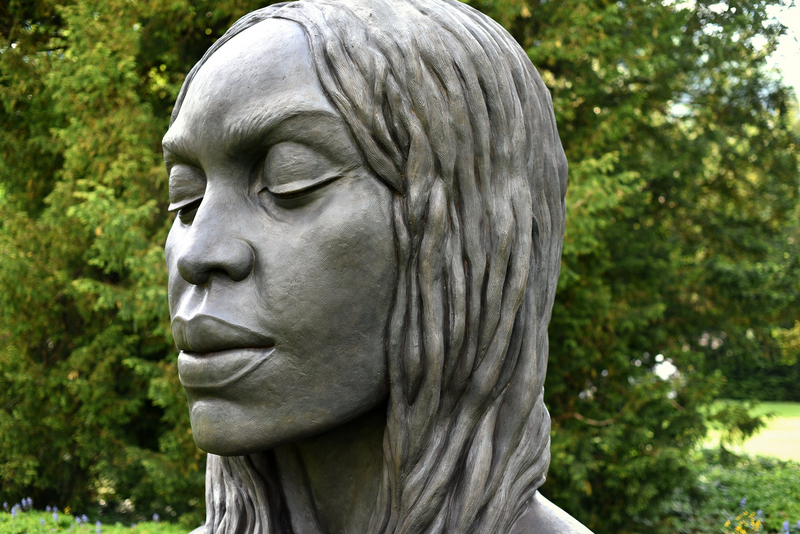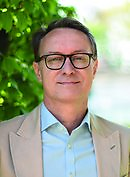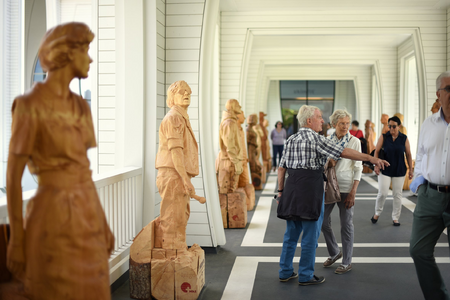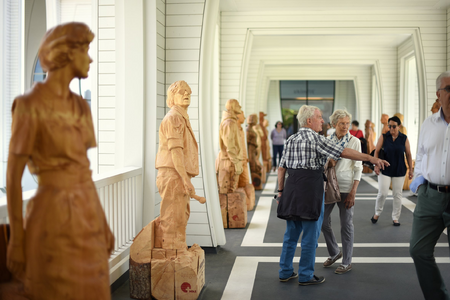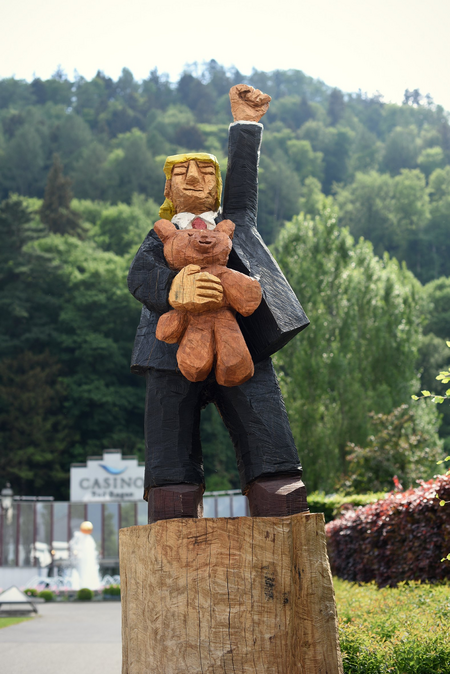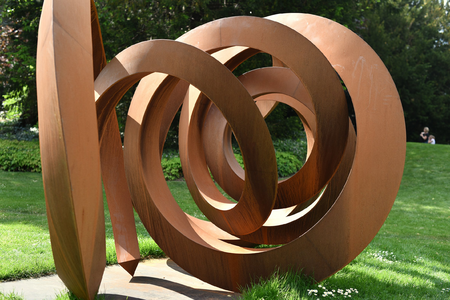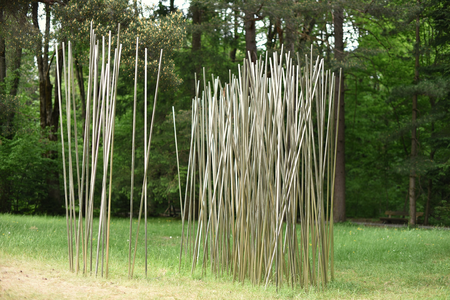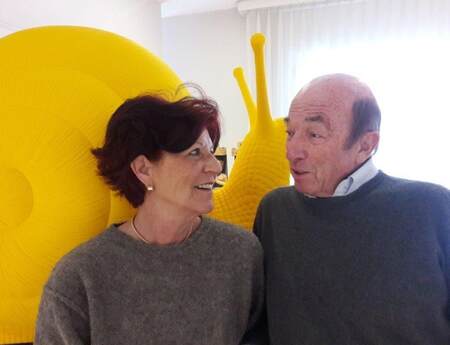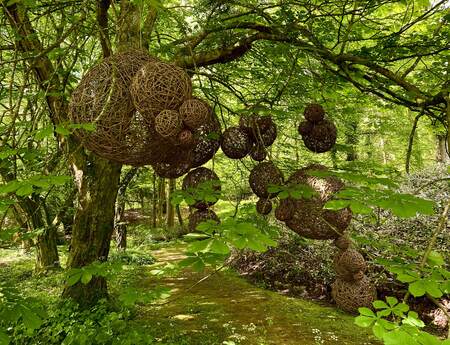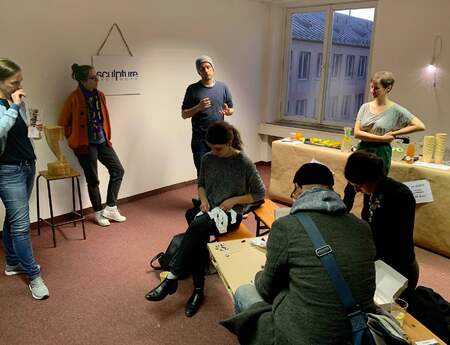Steel so soft, granite so light
Travelers are familiar with the Swiss spa town of Bad Ragaz as the center of Heidi’s world, the fictional home of the heroine in the children’s book by Johanna Spyri. But only a few realize that on their journey through the Rhine Valley to Italy or to the Engadine they rush past an internationally renowned spa. No one less than Paracelsus was the first spa doctor here in the 16th century. Even in those days he acknowledged that the thermal water had healing effects. In the nineteenth century a private individual, the architect Bernhard Simon, started up the modern spa of Bad Ragaz . Simon had built palaces for nobility in St. Petersburg and the Peterhof Palace served as his model when he designed the spa area with the hotel Quellenhof and the kursaal. The Grand Resort Bad Ragaz with the Grand Hotel Quellenhof & Spa Suites, the Grand Hotel Hof Ragaz and the kursaal remain the heart of the town to this day. It is no wonder that such an idyllic location attracted European nobility and other famous guests, including Victor Hugo, Rainer Maria Rilke, Thomas Mann and the author of the Leatherstocking Tales, James Fenimore Cooper. The fact that art lovers flock to the town these days is also due to a private initiative: in 2000 Rolf Hohmeister, specialist for rheumatology, orthopedics and pain medicine at the Medical Center in Bad Ragaz and a passionate art collector, founded the Sculpture Triennial Bad RagARTz, together with his wife Esther.
And now it’s being held again: Since May Bad Ragaz is a single open-air museum for sculpture. Four hundred pieces are distributed and exhibited throughout the town and the area. Seventy-seven artists from seventeen different countries were selected, true to the principle of the founding couple, to show a combination of new discoveries, established artists and big names. The latter include German co-founder of ZERO Heinz Mack, who is present with a silver pillar, and the Italian master Giò Pomodoro, who passed away in 2002. Bad Ragaz provides a setting for the art that is more than adaquate. At the opening in May the warm spring sun bathed the Grand Hotels, the spa park full of colorfully flowering lilacs and magnolia trees and the sculptures in an intoxicating light. If the sculptures were allowed to decide, they would never want to leave. In fact, many really have stayed. A special map explains which sculptures are in Bad Ragaz’s permanent collection and which belong to the program of the current Triennial.
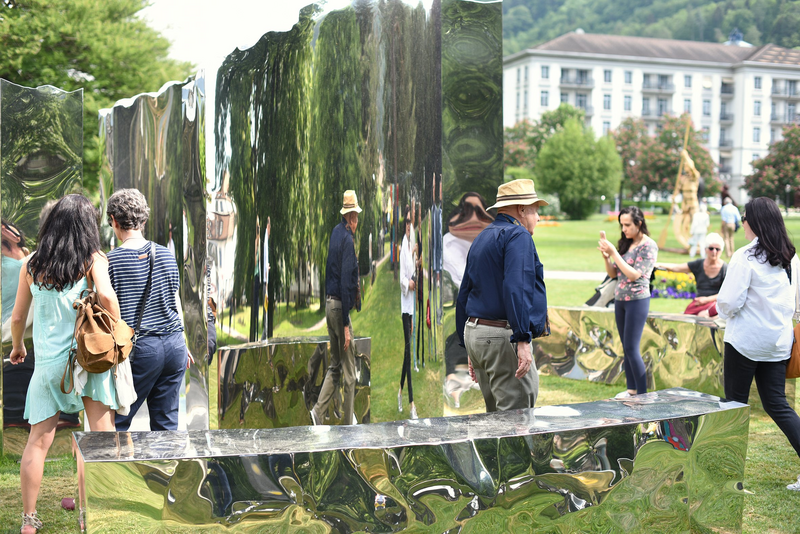
It is best to begin your tour at the park. One of the most prominent works there is the three meter tall bronze bust of a young woman with her eyes closed (La nuova Eva see picture above). This sculpture is the work of Austrian Helga Vockenhuber, who expresses both spirituality and sensuality in her works. The Albanian artist Helidon Xhixha is present with a walk-in installation made of stainless steel. Xhixha polishes the metal until is reflects light- however the result is a distorting mirror in which the person entering is grotesquely deformed.
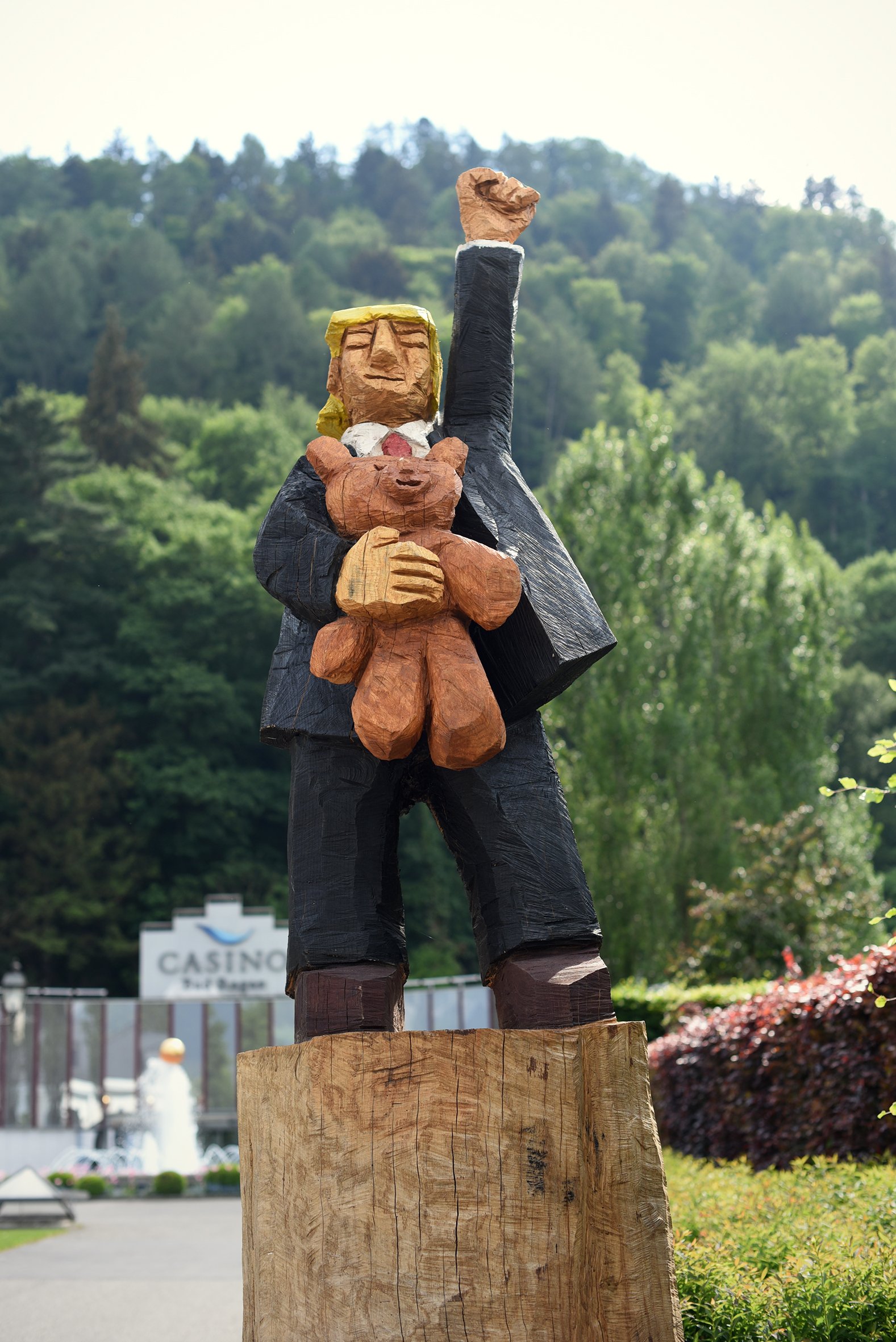
(2015, pigment on linden)
© Steffi Charlotte Fluri
The works of Swiss artist Marcel Bernet add a touch of humor to the scene. You can find his coarsely carved and painted wooden figures everywhere around the center of town and they all have an ironic take on the spirit of the times. His cute Populist with its raised arms has the unmistakable hair of Donald Trump, Beziehung 2.0 (Relationship 2.0) shows a man and a woman, with their backs turned, looking at their phones instead of talking to each other.
In the entrance to the Tamina thermal water world the visitor is met with a parade of famous Swiss people - from Henry Dunant, the founder of the Red Cross, to the Engadine painter Giovanni Segantini, from Marie Tussaud, the founder of the wax figure museum, to the judge Carla del Ponte. The Zurich artist Inigo Gheyselinck carved them all for the Swiss Association Forests and Wood and the Federal Office for the Environment with the idea of drawing attention to the unused Swiss forests. Thus, one learns that forests, when left alone, do not become healthier, but rather overmature. The Swiss Wood Association decided to commission these artworks instead of making a TV commercial. They have caused a bit of a sensation in Switzerland. (Foto at the end of this article)
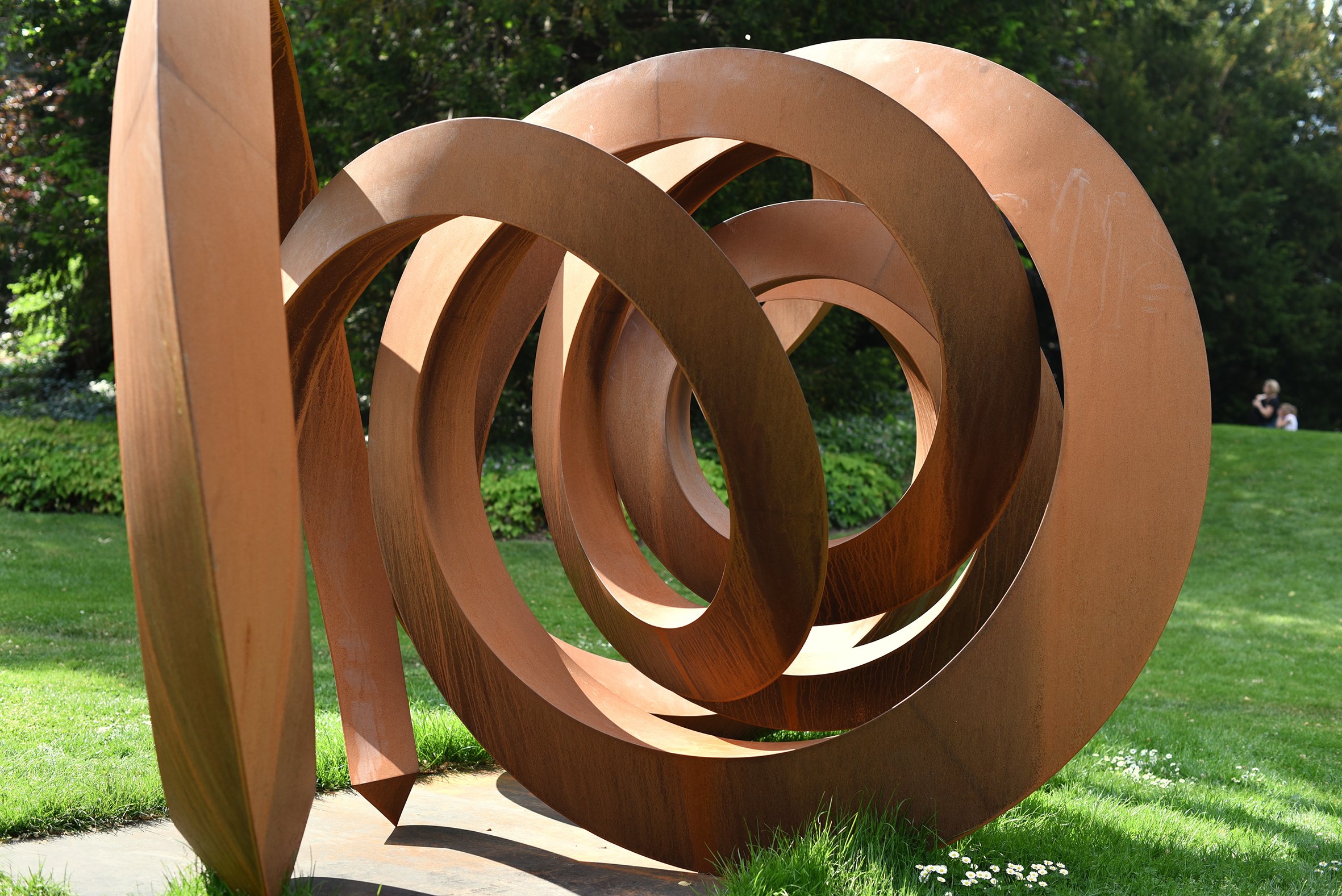
Pieter Obels "Omgekeerde bedoelingen"
(Reverse Intentions, 2016, corten steel)
© Steffi Charlotte Fluri
It is interesting to see how many sculptors cultivate their preference for the industrial material of steel - sometimes rusty, sometimes not. Everyone seems to want to demonstrate in their own style, how masterly they can bend, knot and otherwise artistically form the supposedly hard alloy, which in reality is quite soft. Riccardo Cordero creates quite constructionally complex shapes, while Martina Lauinger makes knots. Pieter Obels forms steel into spirals, Sonja Edle von Hoeßle makes endless loops which balance artistically. With his finely worked steel shapes, James Licini celebrates the perfection of the right angle. For Thomas Röthel steel can take the form of a seesaw, knots, a broken pillar or a sail filled with wind and he lends the material a dancing quality.
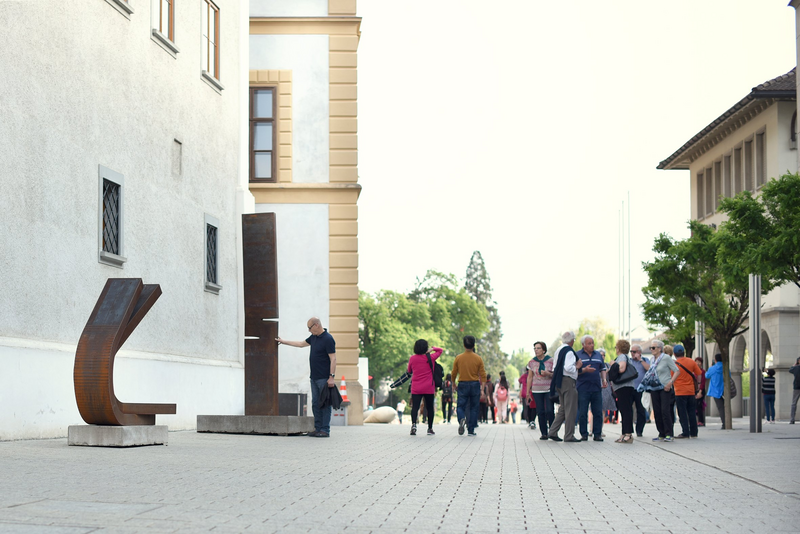
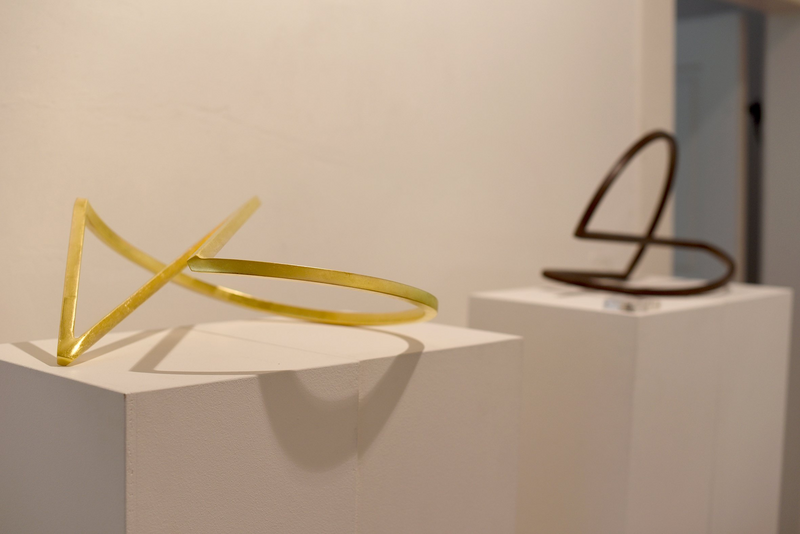
The natural material of wood is hardly less popular, as shown by the work of Josef Langs who is fascinated by the human attitude and who carves his figures roughly from oak. Egon Digon, from Southern Tyrol, ties up his wooden sculptures with strings and bands and it appears as if the material is straining against the restraints.
Heidi Gerullis works with chrome-plated steel and aluminum and creates delicate bamboo forests and folds from her materials.
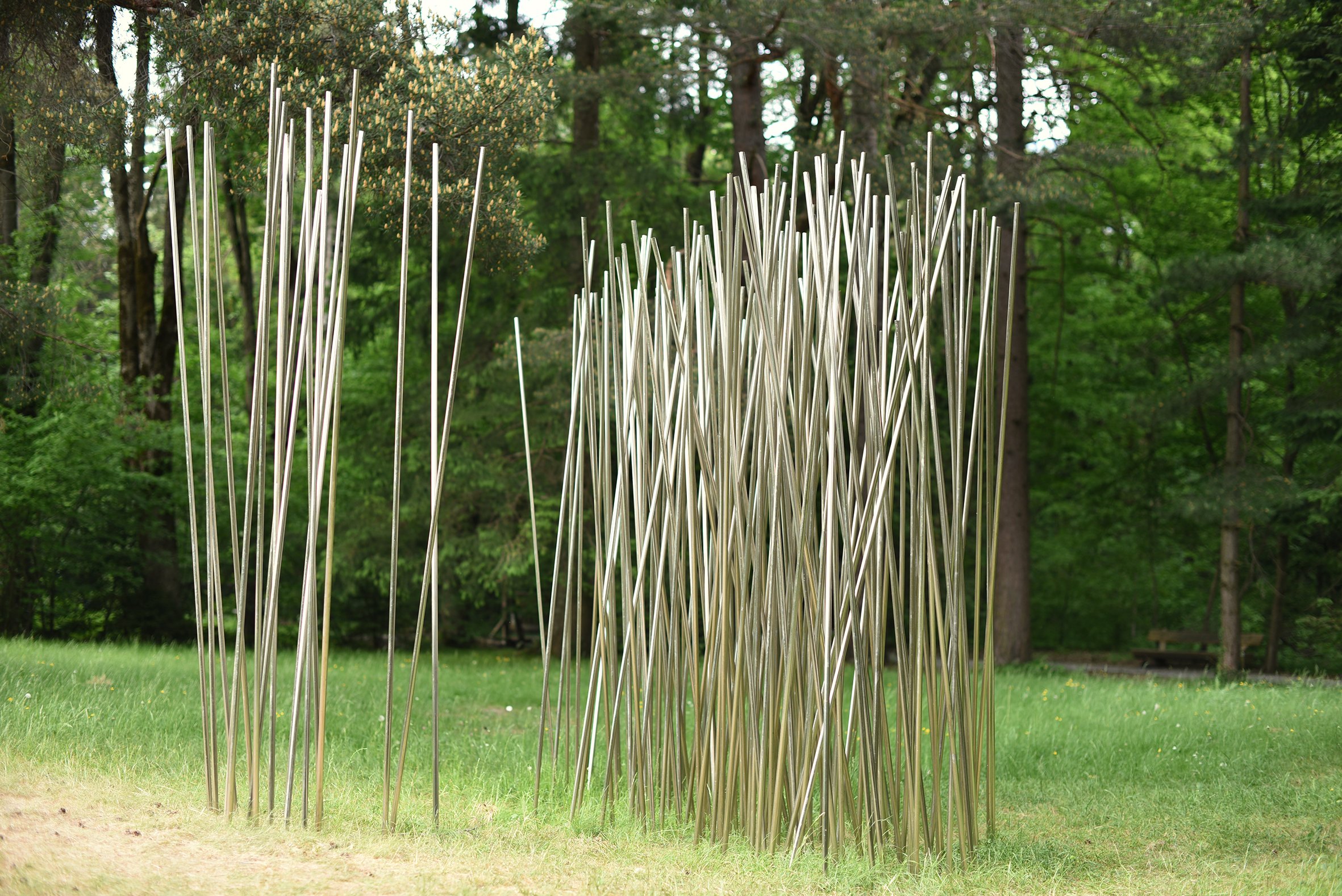
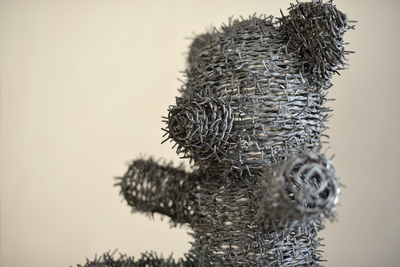
Marc Moser provides a topic of conversation with his dangerous toy animals made of barbed wire. Moser is known for alienating objects of daily life - sometimes ironically or with a fiendish joy at provoking others – from the unusually large, meter long sunglasses to the greedy or miserly one (depending on how you translate Avarice) – a pair of pliers with handles like a woman’s legs, which close naturally when used.
The honeycomb shaped structures created by Reiner Seliger from brick walls remind us of buildings from ancient oriental civilizations. Seliger studied industrial design and his works demonstrate the beauty and the associations that archaic materials can evoke as a piece of art or as a design object. Bricks are not only one of the oldest building materials known to man, they also have advantages when compared to glass and steel in terms of temperature regulation - a fact which has made them interesting for architects once again.
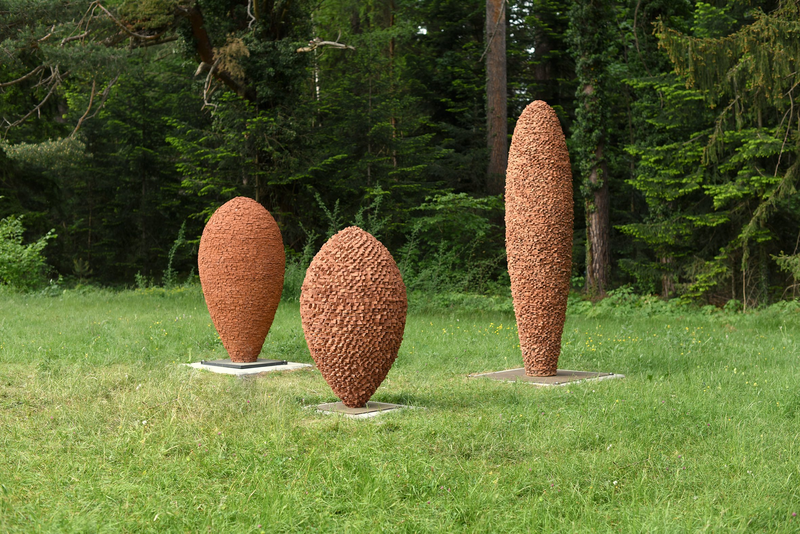
Even the Italian Silvio Santini finds a surprising use for an archaic sculpture material. With its mix of feldspar, quartz and mica, granite always has noble appearance. But it is also heavy. Santini’s granite sculptures, however, appear to imitate paper scrolls and appear light as a feather. They are sensual objects based somewhere between art and design.
Carla Hohmeister works as a stage designer at the theater and creates faces and figures on aluminum and metal installations.
The Wächter der Zeit (Guardians of Time) by the Austrian artist Manfred Kielnhofer appear somewhat strange: The shells made of polyester and resin are enough to make the standing monks recognizable. Inside they are empty. The guardians have already stood at many well-known locations - on a large meadow in Bad Ragaz they are almost as uncanny during the day as they are in a crypt at night.
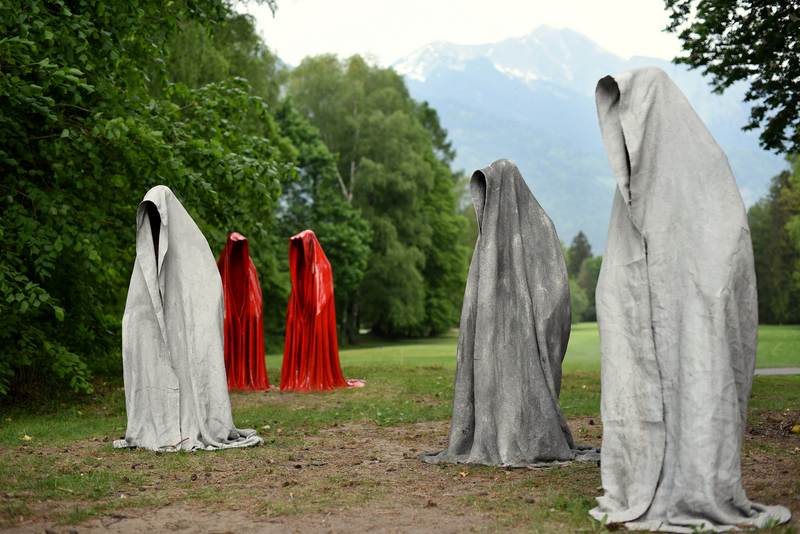
Lukas Hofkunst is also represented. The Swiss artist with the name rich in associations, became known with his giant-sized, yet delicate umbrella sculptures made of wire netting and other metals. They continually create new light experiences due to the changing daylight. Reportedly Hofkunst, whose father was also famous, is planning to build a sculpture park in Saint-Chinian near Béziers in southern France based on the Giardino dei Tarocchi by Niki de Saint Phalle in Tuscany.
It is impossible to do justice to the large selection of the seventh Triennial in just a day. But if you want to see as much as possible of Bad RagARTz, then you should plan at least one day. It’s best to begin in the park, continue to the Grand Resort, then through the center of town, make a lap around the Giessen Lake and then return to the spa area via the objects in the Maienfelder Street. But that’s not quite enough: With the Postbus it is possible to traverse the wildly romantic Tamina gorge up to the old Pfäfers spa located at an altitude of 800 meters. On the top floor of the building the small sculptures are exhibited. This trip can easily be combined with a detour to the gulch of Tamina springs, where a constant stream of water with a temperature of 36.5 C has been flowing out of the rock for centuries. If you want to see even more art, then take the gondola from Bad Ragaz to Pizol. At an altitude of about 1630 meters more sculptures are located between the mountain station Pardiel and the Prodkopf view point. Bad RagARTz has expanded all the way to Vaduz for several years now and there are further sculptures located in the pedestrian zone there.
The Sculpture Triennial in Bad Ragaz lasts until November 4th. Then Rolf and Esther Hohmeister can say: „After the Triennial is before the Triennial“. In the future they can continue to count on support from the community, hotels and citizens. During the opening weekend the atmosphere was just like a big celebration. That shows that Rolf and Esther Hohmeister have succeeded in doing somethat that St. Moritz, with its fickle Art Masters, is still working on: they have established an institution that long since extends beyond the beautiful Rhine valley. This is helped by a clearly defined concept and a certain strictness when selecting artists. A world-famous sculptor would have liked to participate, admits Rolf Hohmeister discretely. „I had to explain to him over dinner, that he is currently too popular.“ Thus, the star artist has to hope that he can participate in the next edition of the Triennial.
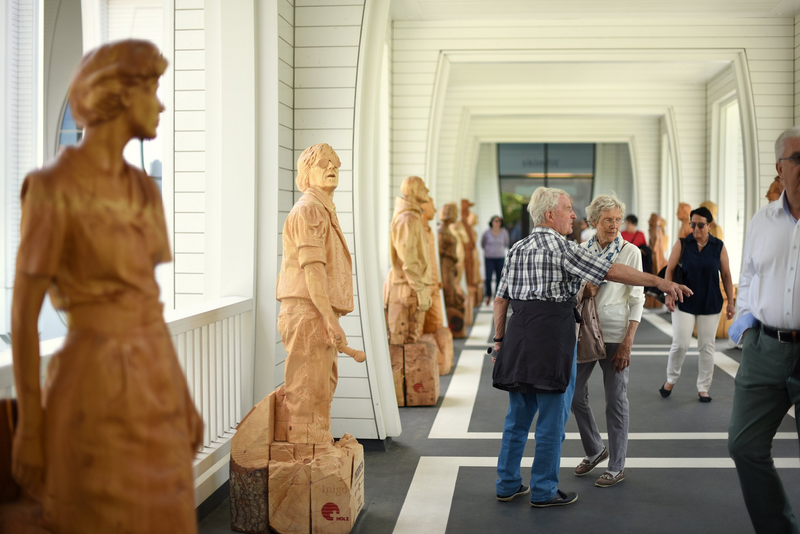
We at sculpture network are especially proud that nine of our members are exhibiting here and will report about them in the upcoming weeks.
They are:
- Marcel Bernet, Switzerland
- Gertjan Evenhuis, The Netherlands
- Martina Lauinger, Switzerland
- Keld Moseholm, Denmark,
- Pieter Obels, The Netherlands
- Jörg Plickat, Germany
- Marc Reist, Switzerland
- Anna Schmid, Switzerland
- Angelika Summa, Germany
Tip: The area around Bad Ragaz is much too beautiful for just one day and there are hotels for every taste. The Resort Bad Ragaz offers the best of everything – stylish thermal pools, gourmet cuisine and art. For the Sculpture Triennial the luxury resort is offering a special package „Bad RagARTz Impression“ which includes three nights, a large breakfast buffet, free entrance to the thermal spa and the legendary Helena Pool, as well as swimming at the Tamina Spa. Also included are a daily 4-course lunch or dinner, as well as the Bad-RagARTz catalog.
Author: Holger Christmann
Holger Christmann is a
Munich based art reporter
and visited the sculpture triennial
Bad RagARTz in Switzerland
